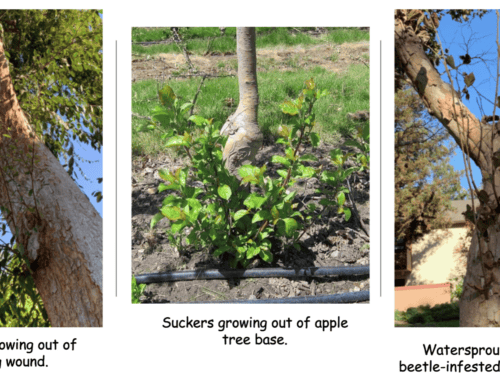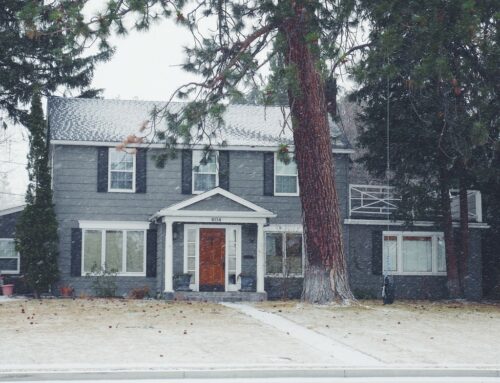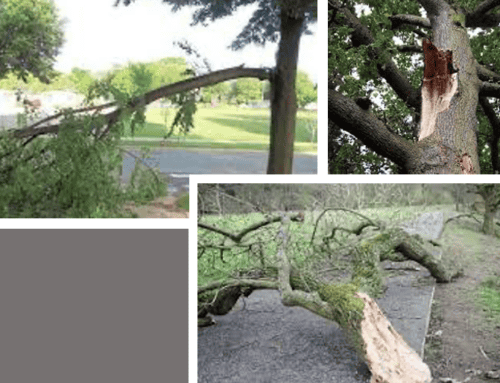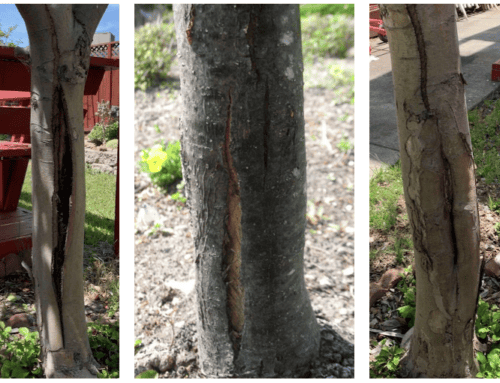Tree roots can grow larger than originally planned for, damaging sidewalks, driveways, and utility pipes. Construction and re-grading can require the removal of tree roots growing in the way. But roots are integral to tree stability. How much of a tree’s roots can you remove before it topples over?

Root pruning or cutting increases chances of whole tree failure.
Below are some rules of thumb. Be aware that many factors also affect tree stability, like species, size, age, soil, and weather.
1. Don’t remove more than 1/3 of anchoring roots.
Avoid removing large, or anchoring, roots. Anchoring roots provide a lot of support and branch off into many smaller roots. If you must remove some, don’t remove over 1/3 of all anchoring roots. Check the base of the tree trunk for root flare. You may have to remove some soil, vines, and grass. You should see some bulges at the trunk’s base. This is where anchoring roots grow out of. Don’t remove more than 1/3 of the total number of root flares.
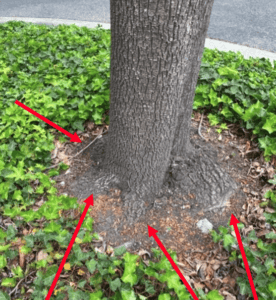
Root flares at the base of a tree’s trunk indicate how many anchor roots there are.
2. Cut roots as far away from the trunk as possible.
Keep as much of the root intact as possible. When cutting roots, a cut farther away from the trunk is less damaging than a cut close to the trunk. A good way to decide is to measure the distance of the cut from the tree trunk and compare it to the trunk’s diameter. See diagram below.

Ideally, cut roots at a distance equal to at least 3-5 times the trunk diameter away from the trunk base.
Why these thresholds? Studies show that removing even just one root can decrease tree stability by the following amounts.

3. Check the tree for other risk factors.
If the tree is already at risk of falling, it may be better to simply remove the entire tree. Check the tree for lean, lifting roots, and weak or decayed wood. Also, what’s the target if the tree fails? Tree’s usually fall in the opposite direction of where the roots are removed. If the tree can hit a house or heavy traffic area, the damage from tree failure is even larger.
Please note that these three tips are general guidelines. Exact percent reduction in stability was taken from a study on young oak trees. These numbers will vary depending on tree species and size. For more information, check out this article from E. Thomas Smiley at the Bartlett Tree Research Laboratories. Tree failure is very difficult to predict, and current research on the affects of root removal is limited. Contact us if you have questions or would like a customized tree assessment.

